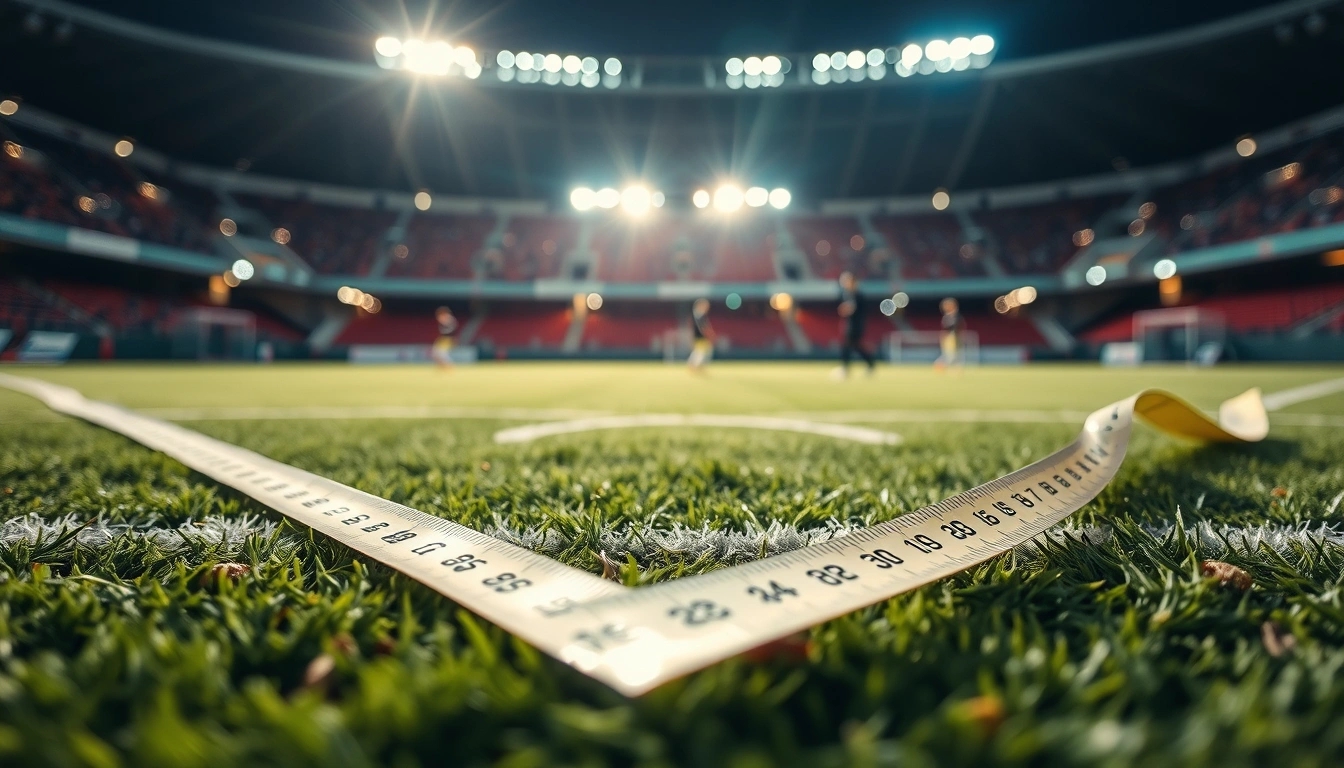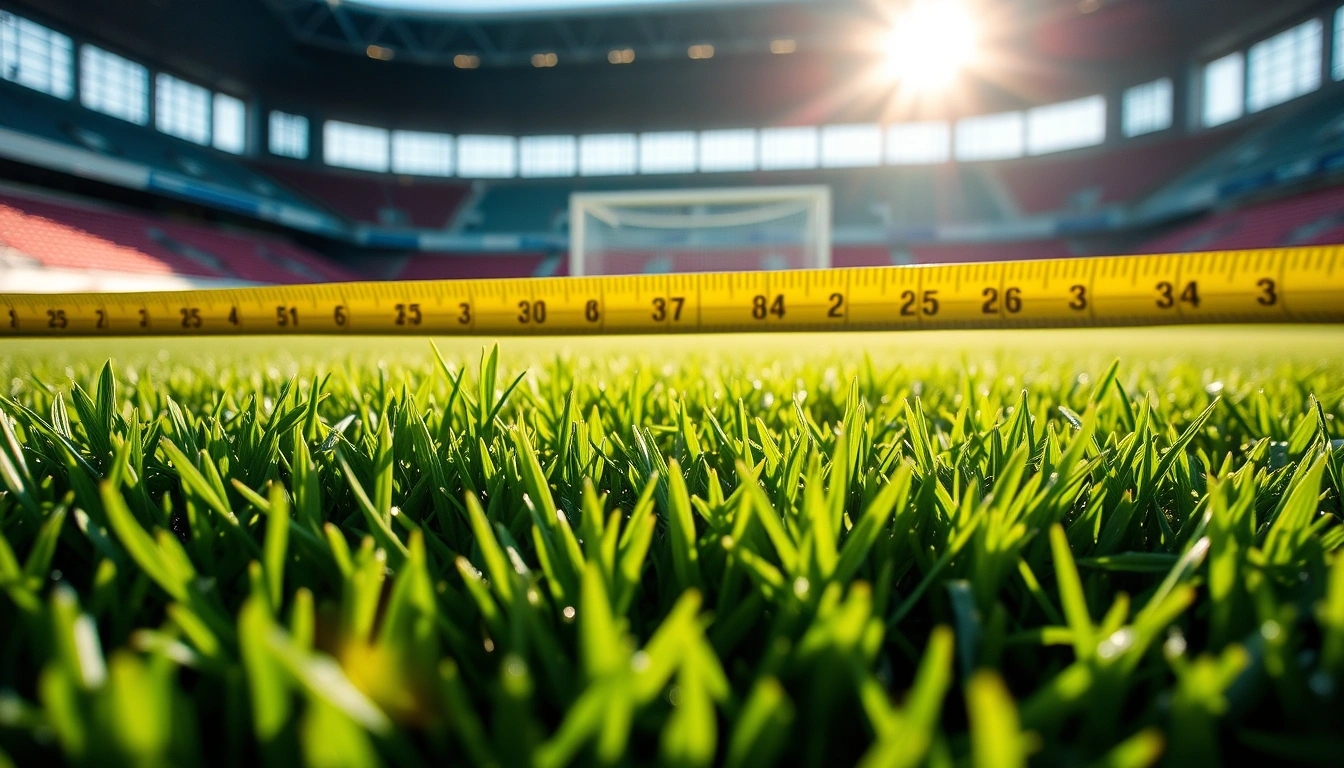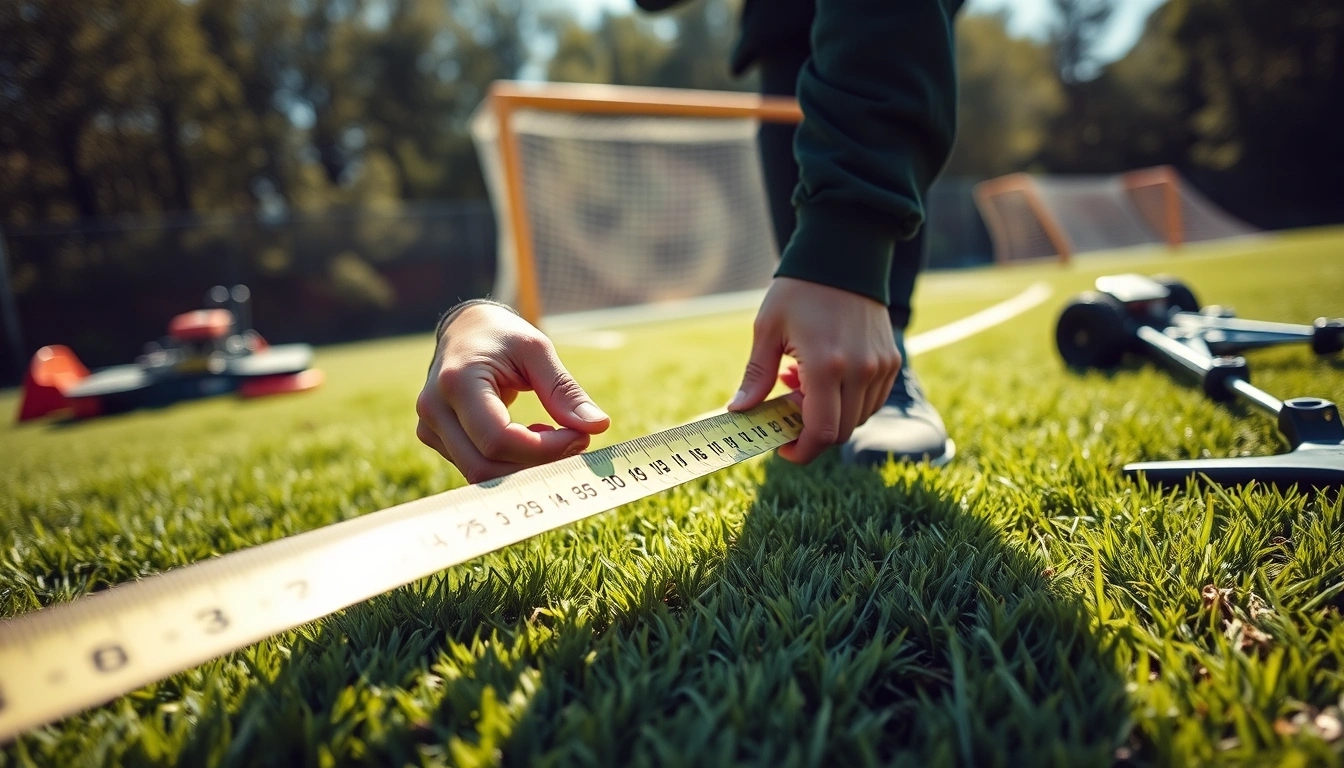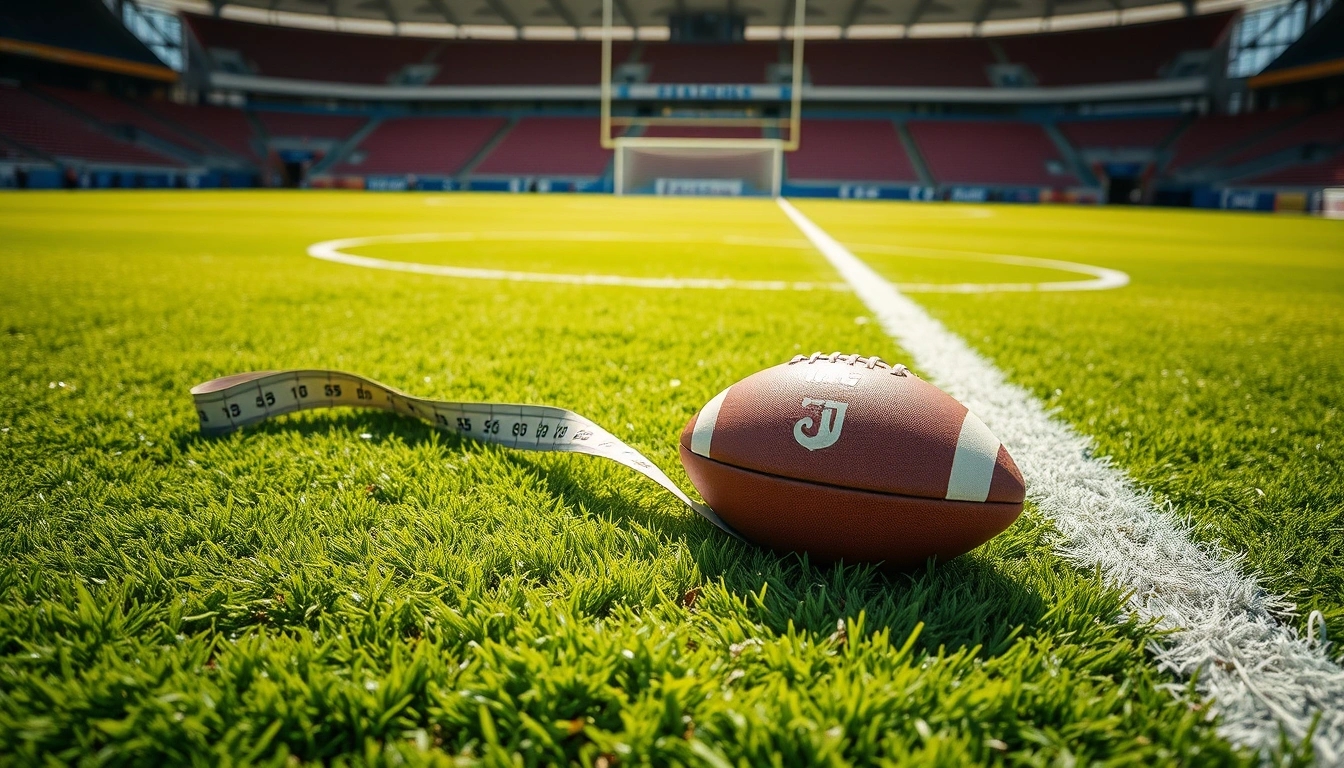Alright, let’s get real about football pitches—the size, the layout, the whole shebang—and why it’s way more than just a patch of grass where folks kick a ball around. You might think, “Eh, a pitch is a pitch,” but nope, the dimensions seriously shape how the game unfolds, how teams strategize, and even how fair the contest is. From local weekend warriors to the pros in packed stadiums, the pitch size can make or break the vibe.
First off, the official rules. FIFA isn’t just making up numbers for fun. The standard pitch size floats between 100 to 110 meters in length and 64 to 75 meters in width for international matches. That’s a pretty big playground, but it’s not set in stone. The rulebook gives some wiggle room, which means pitches can vary quite a bit depending on where you are. And believe me, those few meters here and there? They can totally change how the game flows.
| Dimension | Minimum (meters) | Maximum (meters) |
|---|---|---|
| Length | 90 | 120 |
| Width | 45 | 90 |
Now, not every league or country sticks to the same pitch size. Premier League pitches tend to hover around the bigger end, while some lower leagues or old-school clubs might have a more compact field. This variation can be a sneaky advantage or headache. For example, a smaller pitch means less space to run, which favors tight, aggressive play. Big pitches? They’re a stamina test and reward teams with speedy wingers and long passes.
- Smaller pitches: Encourage quick, physical battles but can feel cramped and chaotic.
- Larger pitches: Allow expansive play but might slow down the game and tire players faster.
Here’s the kicker: player performance and strategy are deeply intertwined with pitch size. Coaches tweak formations and game plans based on the field’s dimensions. A few meters less in width might mean less room for overlapping fullbacks, while extra length can stretch defenses and open up space. Players also have to manage their energy differently—running on a huge pitch is a marathon, not a sprint.
Ever wondered why some clubs stubbornly stick with smaller pitches? It’s often about home advantage. Teams used to tight spaces can frustrate opponents who prefer wide-open play. But it’s not all roses—smaller pitches can also limit creativity and tire players quicker due to constant pressure.
| Pros of Smaller Pitches | Cons of Smaller Pitches |
|---|---|
| Faster decision-making | Less space for skillful play |
| Physical, intense matches | Can feel claustrophobic for players |
| Home teams get an edge | May reduce scoring chances |
On the flip side, massive pitches can turn matches into endurance battles. Fans might get bored watching players jog across the field, but tactically, it opens up a world of possibilities. Teams can stretch opponents, exploit gaps, and use pace to full effect. Still, it demands top-notch fitness and patience.
Now, here’s a spicy debate: does pitch quality trump pitch size? A perfectly measured pitch with patchy grass or uneven turf can ruin the game just as much as a quirky dimension. Many argue that a smooth, well-maintained surface is more crucial than the exact length or width. After all, a bad pitch can cause injuries, unpredictable ball bounces, and frustrate players to no end.
Technology’s stepped in too—laser measuring tools and drones now help groundskeepers keep pitches within spec with insane precision. No more eyeballing or rough estimates. This tech ensures fairness and consistency, especially in top-tier competitions where tiny differences matter.
Lastly, a quick glance back in time shows pitches haven’t always been this uniform. Early football fields were all over the place, with some even resembling rugby grounds more than today’s manicured pitches. As the sport grew, so did the push for standardization, but the debate over ideal pitch size will likely never settle.
So, if you’re a club manager or groundskeeper, here’s the takeaway: balance is key. Stick close to regulations, but consider your team’s style and the pitch’s quality. Because at the end of the day, the pitch isn’t just dirt and grass—it’s the stage where football magic happens.
Practical Tips for Clubs and Groundskeepers:
- Measure pitches regularly with precise tools.
- Maintain turf quality—smooth, even surfaces reduce injury risk.
- Consider your team’s playing style when deciding on pitch dimensions.
- Stay updated with league regulations to avoid penalties.
- Use technology to monitor wear and tear and schedule maintenance.
In short, football pitch measurements are way more than just numbers—they shape the entire game experience, from tactics to player stamina, and even fan enjoyment. So next time you watch a match, spare a thought for that patch of grass. It’s quietly calling the shots.
The Official Dimensions: What’s the Rulebook Say?
Alright, let’s talk about the pitch—the very stage where all the football drama unfolds. You might think that the size of a football pitch is just some arbitrary measurement tossed around by suits in a boardroom, but nope, these numbers are far from random. FIFA, the global football overlord, has laid down some pretty specific rules about pitch dimensions, and they’re not just for show. These measurements actually shape how the game is played, how players move, and how strategies are cooked up on the fly.
So, what does FIFA say? The official pitch length has to be between 100 and 110 meters, and the width must fall somewhere between 64 and 75 meters. That’s a decent-sized rectangle, but here’s the kicker—there’s a range, not a fixed size. This flexibility allows stadiums across the world to adapt pitches to their space constraints, but it also means that no two fields are exactly alike. Now, you might wonder why not just fix one size and call it a day? Well, the game’s flow actually depends on these subtle differences.
| Dimension | Minimum (meters) | Maximum (meters) |
|---|---|---|
| Length | 100 | 110 |
| Width | 64 | 75 |
Here’s the deal: a wider pitch tends to open up the game, giving wingers more space to sprint and cross, while a narrower one crams players closer together, often resulting in a more physical, tight midfield battle. Length matters too—longer pitches favor teams who love to launch long balls or counterattacks, while shorter ones can speed up the tempo but reduce the space to build up play.
- Why these numbers matter: They ensure fairness—no team gets a sneaky advantage by having a pitch that’s way bigger or smaller.
- Consistency for players: When professionals switch stadiums, they’re not suddenly dealing with a completely alien playing field.
- Broadcast and fan experience: The size influences sightlines and how the game looks on TV.
But here’s a little secret: despite these guidelines, there’s always some wiggle room, and some clubs have been known to tweak their pitch sizes to suit their playing style. It’s like a chef adjusting the recipe just a tad to suit their taste buds. And while it might not be a massive difference, those few meters can totally change how a match pans out.
In the end, FIFA’s pitch size rules are the unsung heroes behind the beautiful game, quietly setting the stage for every goal, tackle, and nail-biting finish. So next time you watch a match, spare a thought for those meters of grass—they’re more than just dirt and lines; they’re the canvas of football.
Variations Across Leagues and Countries
Not all football pitches are carbon copies of each other, and honestly, that’s part of the charm and chaos of the beautiful game. While FIFA lays down some official guidelines, leagues and countries often tweak those dimensions to fit their own style, climate, or even stadium constraints. So, what’s really going on when you see a pitch that feels a bit wider, narrower, longer, or shorter than what you’re used to? Buckle up, because this little difference in size can send ripples through the entire match experience—for players, coaches, and fans alike.
First off, let’s get the basics out of the way. FIFA states that a pitch should be between 100 to 110 meters long and 64 to 75 meters wide for international matches. But here’s the kicker: domestic leagues have more wiggle room. For example, the English Premier League pitches tend to hover around 105 x 68 meters, while Major League Soccer (MLS) stadiums in the US sometimes go a bit smaller or larger, depending on the venue. Meanwhile, in South America, especially in Argentina and Brazil, you’ll find pitches that play with wider fields, giving teams more room to stretch out.
| League/Country | Typical Pitch Dimensions (meters) | Effect on Play |
|---|---|---|
| English Premier League | 105 x 68 | Balanced play, favors tactical discipline |
| MLS (USA) | 100-110 x 64-75 | Varied, some smaller pitches encourage fast, physical play |
| Brazilian Serie A | 110 x 75 | More space for flair and dribbling |
| German Bundesliga | 105 x 68 | High pressing and quick transitions |
Now, why do these differences matter? Well, a wider pitch means more ground to cover, which can tire players faster but also open up passing lanes and opportunities for wingers to shine. On the flip side, a narrower field can squash those wide plays but speed up the game’s tempo, favoring quick, tight passing and pressing. It’s like comparing a sprawling city park to a cozy neighborhood street—both have their vibe, but the way you move through them changes.
- Players: Adjust their stamina and positioning based on pitch size. A bigger pitch demands more running and stamina.
- Coaches: Tailor tactics—wider pitches might mean more wing play, smaller pitches favor compact defense and quick counters.
- Fans: Experience different styles of football, sometimes more open and attacking, sometimes tight and tactical.
Interestingly, some leagues have had to compromise due to stadium limitations. Take the Italian Serie A—historic stadiums sometimes force smaller pitches. This can frustrate players used to more room but also creates a unique, intense atmosphere where every inch counts.
“It's not just about size, but how you use it,” said a veteran coach once. “A 5-meter difference here or there might sound trivial, but on the pitch, it’s a whole new ball game.”
So next time you watch a match and notice the game feels a bit different—maybe more frantic or more stretched out—remember, it might just be the pitch playing tricks on you. After all, football isn’t just about the ball and players; the very ground they play on shapes the story.
Practical Insight for Fans and Players:
- When traveling to watch games abroad, check pitch sizes—it might clue you into why your favorite team looks off or dominant.
- Players switching leagues often need a period of adjustment not just for opponents, but for the pitch itself.
- Groundskeepers and clubs should balance tradition, regulations, and playing style when deciding pitch dimensions.
In the end, these subtle variations add layers to the global football tapestry, making every match a little unique and every league its own beast. And honestly, isn’t that what keeps us coming back for more?

Impact on Player Performance and Strategy
You might think a few meters here and there on a football pitch don’t really matter much, right? Well, buckle up, because those tiny differences can flip the whole game script on its head. Imagine a pitch that’s just a smidge shorter or narrower than usual—teams don’t just stroll onto the field; they adjust their entire game plan, sometimes subconsciously, sometimes with full-on tactical meetings. It’s wild how something that seems so minor can totally shift how players move, breathe, and battle it out.
First off, let’s talk energy. On a bigger pitch, players have to cover more ground. That means more sprints, more jogging, more stamina burned. Midfielders especially feel this pinch because they’re the engine room, constantly linking defense to attack. On a smaller pitch, the game gets cramped, tighter, and honestly, a bit more frantic. Players need quicker reflexes, sharper turns, and less room to hide or rest. You can almost see the sweat pouring faster. Coaches often tweak their lineups based on pitch size—maybe they’ll throw in players known for their endurance on a big field or those with explosive speed and agility on a smaller one.
| Pitch Size | Player Impact | Strategic Adjustments |
|---|---|---|
| Large (110-120m length) | High stamina demand, more space for long passes | Emphasis on wing play, stretching defense |
| Standard (100-110m length) | Balanced physical and technical demands | Flexible formations, mix of short and long passes |
| Small (90-100m length) | Quick bursts, less recovery time | Compact defense, fast pressing, tight passing |
Now, strategy-wise, it’s not just about running more or less. A few meters extra length gives teams the luxury to play a more patient, possession-based game. They can afford to build attacks slowly, switch the ball from side to side, and wait for that perfect opening. On smaller pitches, forget that. The game turns into a high-speed chess match where pressing high and quick turnovers become the name of the game. Defenses get squeezed, and attackers have to think fast and shoot faster.
- Energy Management: Players must pace themselves differently depending on pitch size; endurance is king on larger fields.
- Formation Flexibility: Coaches might favor formations like 4-3-3 on big pitches for width, but switch to a tight 4-4-2 on smaller ones.
- Passing Style: Longer passes and crosses dominate bigger pitches, while quick, short passes rule smaller ones.
And let’s not forget the psychological side. Players often talk about feeling “boxed in” or “free to roam” depending on pitch size. That feeling can mess with confidence and decision-making. A cramped pitch can make even the best players feel claustrophobic, leading to rushed plays or silly mistakes. Conversely, a vast pitch might make some players hesitate, worried about losing their defensive shape.
In short, those few meters more or less aren’t just numbers on a blueprint; they’re game changers. Coaches, players, and even fans might not always notice consciously, but the pitch size subtly molds every pass, run, and tackle. So next time you watch a match, keep an eye on the field dimensions—it might just explain why your favorite team looks like a different beast altogether.
Smaller Pitches: The Pros and Cons
You know, not every football pitch is a sprawling green canvas the size of a small country. Some clubs deliberately go for compact pitches, and it’s not just because they ran out of space or budget. There’s a method to the madness, and it’s fascinating how these smaller dimensions shake up the beautiful game. But, like anything, it’s a mixed bag — there are perks and pitfalls, and sometimes, it feels like a bit of a headache for players and coaches alike.
First off, the advantages. Smaller pitches tend to speed up the game. With less ground to cover, players are constantly in each other’s faces — no hiding, no long sprints to get back into position. This can make matches feel more intense and action-packed. Think of it as football on espresso: fast, furious, and full of quick decisions. Teams that thrive on quick passes and tight pressing often love it here. It’s a tactical playground for managers who want to squeeze every bit of energy and skill out of their squad.
| Advantages of Smaller Pitches | Details |
|---|---|
| Faster gameplay | Less space means quicker ball movement and more action |
| Enhanced pressing | Teams can close down opponents rapidly |
| Improved player engagement | Players are always involved, no hiding spots |
| Cost-effective | Smaller grounds can be cheaper to maintain |
But, hold your horses — it’s not all sunshine and rainbows. Smaller pitches can also cause some serious headaches. For one, it can turn into a physical slog, with less room to breathe and more frequent collisions. Players often complain about the lack of space to showcase their skill or make those long, sweeping runs that fans adore. Plus, it can be a nightmare for teams that rely on wide play or aerial battles — the cramped quarters just don’t allow for that kind of football.
- Less tactical variety: Smaller pitches limit formations and styles.
- Increased injury risk: More contact and less space can lead to knocks.
- Fan experience: Sometimes the game feels congested and less fluid.
And let’s not forget the mental game. Players sometimes feel boxed in, which can sap creativity. Coaches have to constantly adjust their strategies, and not all teams adapt well. It’s a bit like trying to fit a square peg into a round hole — some just don’t fit.
Practical tips for clubs considering smaller pitches:- Ensure turf quality is top-notch to prevent injuries.- Train players specifically for high-intensity, close-quarters play.- Use pitch markings cleverly to maximize usable space.- Communicate clearly with referees about any unique challenges.
In the end, the choice of pitch size reflects a club’s identity, resources, and ambition. Smaller pitches can be a secret weapon or a thorn in the side. Either way, they add a unique flavor to the game — and sometimes, that’s exactly what football needs: a little spice and unpredictability.
Big Arenas, Big Challenges
You know, when it comes to football pitches, size really does matter — but not always in the way you’d think. Sure, a massive pitch can look impressive, sprawling out like a green ocean, daring players to cover every inch. But here’s the kicker: these giant playing fields often turn into stamina marathons rather than tactical masterpieces. Players end up running their socks off, chasing long balls and stretching themselves thin, which, let’s be honest, can sometimes make the game feel like a bit of a slog. Fans? Well, they might find themselves checking their watches more than cheering.
Why is that? Well, a larger pitch demands more energy from the players — no surprise there — but it also changes the way teams approach the game. Instead of tight, quick passing and close control, you get more emphasis on endurance and long-range tactics. Coaches often have to rethink their strategies entirely. It’s like trading a chess game for a marathon; the mental and physical challenges shift dramatically. Some teams thrive on this, using the extra space to stretch defenses and exploit gaps, while others just look plain exhausted by the 70th minute.
| Big Pitch Pros | Big Pitch Cons |
|---|---|
| More space for creative attacking play | Players tire faster, leading to slower pace later |
| Can stretch opposing defenses | Less frequent close, exciting battles for the ball |
| Allows for more tactical variety | Fans may find games less engaging |
Now, don’t get me wrong — there’s a certain beauty in watching a team expertly navigate a large pitch, pulling off those long passes and clever runs. But the reality is, sometimes the sheer size can sap the game’s intensity. Instead of end-to-end action, you get these patches where the ball drifts harmlessly across the field, and the crowd’s enthusiasm dips. It’s a tricky balance.
- Stamina becomes king: Players need to be in top physical condition, or they’ll fade fast.
- Tactical patience: Coaches might slow the game down, waiting for the perfect moment to strike.
- Fan engagement: Big pitches can sometimes mean fewer moments of nail-biting drama.
So, what’s the takeaway? Big pitches are a double-edged sword. They offer exciting possibilities but also bring challenges that can dull the spectacle. Clubs and stadium designers have to ask themselves: is the extra space really worth the trade-off? Or does it just turn matches into endurance tests, where tactics take a backseat to who’s got the best lungs? It’s a conversation that’s been buzzing in football circles for years, and honestly, it’s not going away anytime soon.
In the end, maybe the best pitch isn’t the biggest one, but the one that keeps players sharp and fans on the edge of their seats. Because after all, football’s about passion and excitement — and no amount of space can replace that.

Pitch Quality vs. Pitch Size: What Matters More?
Alright, here’s the million-dollar question that’s been stirring up some chatter in the football community: Does the quality of the turf actually trump the official pitch dimensions? It’s a debate that’s less black-and-white than you might think. On one hand, you’ve got the neat, tidy numbers—length, width, and all those official FIFA specs that scream “this is how a pitch should be.” On the other, there’s the gritty reality of the grass underfoot, the bumps, the soggy patches, and yes, even those mysterious divots that seem to appear just before kickoff.
Let’s get real for a second. Imagine a pitch that’s spot-on with the measurements, perfect in size and shape, but the grass is patchy, muddy, or worse, uneven. Players slip, the ball bounces unpredictably, and suddenly the game isn’t about skill or strategy; it’s a battle against the field itself. Conversely, a slightly smaller or larger pitch with pristine turf might actually encourage better gameplay. So, what’s the takeaway? It’s not just about how big the field is, but how good it feels to play on.
| Aspect | Pitch Size | Pitch Quality |
|---|---|---|
| Impact on Gameplay | Alters team strategy and player positioning | Affects ball control and player safety |
| Player Experience | Requires stamina adjustment | Boosts confidence and reduces injury risk |
| Maintenance | Relatively fixed once installed | Needs constant care and investment |
Now, don’t get me wrong, the official dimensions aren’t just there to make groundskeepers’ lives harder. They ensure fairness, consistency, and a level playing field—literally. But when you’re out there on a rainy Tuesday night, trying to thread a pass through a muddy mess, you might swear that pitch quality is the real MVP.
- Why pitch size matters: It dictates the pace, space, and tactical possibilities. Big pitch? More running. Small pitch? More close-quarter battles.
- Why pitch quality matters: It influences ball behavior, player footing, and overall enjoyment of the game.
Here’s a little insider nugget: some clubs invest heavily in turf technology—heating systems, hybrid grass, advanced drainage—to keep their pitches in top shape, even if their size is a bit off from the “ideal.” Meanwhile, others stick rigidly to the measurements but let the grass suffer. Guess which ones get more praise from players?
"Playing on a perfect pitch feels like dancing on clouds," says one midfielder."But a few meters off the official size? You get used to it."
In the end, it’s a juggling act. Ideally, you want both: a pitch that meets the official size standards and boasts impeccable quality. But if you’re forced to choose, many pros will tell you that the condition of the turf often has a bigger say in how the game unfolds. Because, let’s face it, no one wants to lose a match because the field turned into a slip’n’slide.
So next time you’re watching a game and grumbling about the pitch, remember—it’s not just the numbers on paper that count, but the feel of the turf beneath those boots. And sometimes, that’s where the real game is won or lost.
Technology and Measurement Accuracy
When it comes to football pitches, getting the measurements spot on isn’t just some bureaucratic hoop to jump through—it’s what keeps the game fair, competitive, and enjoyable for everyone involved. These days, the old tape measures and chalk lines are getting a serious upgrade. Enter the era of laser measurement tools and drones, shaking up how groundskeepers and officials make sure the pitch is up to snuff.
Let’s be honest, using a tape measure on a muddy field, especially after a rainstorm, is about as fun as watching paint dry. That’s where laser tools come in. These gadgets shoot out beams that bounce back instantly, calculating distances with pinpoint accuracy—down to millimeters. It’s like having a superpower for pitch measurement. No more “eyeballing” or second-guessing if that goal box line is a tad off. Plus, it speeds things up, which is a blessing when you’ve got a tight schedule before kickoff.
- Why lasers? Because precision matters. A few centimeters off can mess with player positioning and game flow.
- Speedy setup: Laser tools cut down measurement time drastically.
- Data storage: Many devices can save measurements digitally, which means less paperwork and more accuracy.
But wait, there’s more—drones! These flying gadgets offer a bird’s eye view, literally. Instead of trudging around the pitch with a measuring tape or even a laser, drones capture high-resolution images and videos of the entire field. Using specialized software, these images are stitched together to create a detailed map of the pitch, allowing for precise dimension checks and even identifying uneven surfaces or worn-out patches.
| Technology | Advantages | Potential Drawbacks |
|---|---|---|
| Laser Measurement Tools | Highly accurate, fast, easy to use | Costly initial investment, requires training |
| Drones with Imaging Software | Comprehensive field view, detects surface issues | Weather-dependent, regulatory restrictions |
Now, before you think this is all just fancy tech toys, consider the stakes. Football pitches that don’t meet official dimensions can lead to matches being postponed or even voided. Imagine the chaos! And for clubs, especially in lower leagues, the investment in these technologies might seem steep, but the payoff in terms of compliance and pitch quality is worth it.
Practical tip for clubs: If you’re not ready to splash out on drones or lasers, start small. Regularly check your pitch with a reliable measuring tape and keep detailed records. When you’re ready to upgrade, consider partnering with local tech firms or universities that might offer drone services at a discount—everyone loves football, after all.
In the end, technology in pitch measurement isn’t about replacing the human touch but enhancing it. It’s about making sure every blade of grass is where it’s supposed to be, so the beautiful game can be played as beautifully as possible. Because let’s face it, no one wants to argue about whether the penalty spot is a few centimeters off when the ref’s whistle blows.
Historical Changes in Pitch Sizes
Football pitches, believe it or not, haven’t always been the neat rectangles we see today. The dimensions have actually bounced around quite a bit over the decades, and there’s a good reason why they keep shifting. Back in the early days of the sport, there wasn’t a strict rulebook telling clubs exactly how big their fields needed to be. It was more of a “make it fit” scenario — whatever space was available got turned into a pitch. This meant some grounds were tiny, others were sprawling, and players had to adapt on the fly.
| Era | Typical Pitch Size (Length x Width in meters) | Notes |
|---|---|---|
| Pre-1900s | 80-110 x 50-70 | Highly variable; no official standard |
| Early 1900s | 90-110 x 45-75 | FIFA starts recommending ranges |
| Mid 20th Century | 100-110 x 64-75 | More consistency; international matches favor larger pitches |
| Modern Day | 100-110 x 64-75 | Strict regulations but some flexibility allowed |
The official formalization began when FIFA stepped in, trying to bring some order to the chaos. They set minimum and maximum dimensions to ensure fairness and consistency, but even then, there’s wiggle room. This flexibility is why you’ll notice some Premier League pitches are a tad wider or longer than others, even though they’re all top-tier stadiums. It’s like giving teams a little secret weapon — a pitch tailored to their style of play.
- Why does this matter? Because the size of the pitch impacts everything — from the pace of the game to how players conserve energy.
- Smaller pitches tend to make the game more intense and close-quartered, favoring quick passes and aggressive defense.
- Larger pitches open up the game, rewarding stamina and long-ball tactics.
Looking back, the evolution of pitch sizes also reflects changes in how football is played. Early football was rough and tumble, with less emphasis on tactics, so pitch size was less critical. As the game evolved into a more strategic sport, the dimensions became a vital piece of the puzzle. Think of it like a chessboard — the size of the board changes the nature of the game.
"Back in the 1920s, some pitches were barely 90 meters long, forcing teams into a cramped, end-to-end battle. Fast forward to today, and you’ve got stadiums like Camp Nou stretching the field to 105 meters by 68 meters, giving players acres of space to work their magic."
Technology and improved stadium infrastructure have also played a role. Modern grounds have the luxury of designing pitches that meet both official standards and the tactical desires of their teams. But don’t get fooled into thinking this is just about numbers on a blueprint. The condition of the turf, weather, and even altitude can all influence how the pitch size affects gameplay.
So, why might pitch sizes keep changing? Well, the game itself isn’t static. As tactics evolve, so do the demands on the playing surface. Plus, governing bodies occasionally tweak rules to improve fairness or adapt to new styles of play. And let’s be honest — sometimes it’s just about giving a home team a bit of an edge, whether consciously or not.
In short, pitch dimensions are like the unsung heroes of football — quietly shaping the drama on the field without most fans even realizing it. Next time you watch a match, take a moment to appreciate the space players have to maneuver. It’s a subtle but powerful factor that’s been evolving since the sport kicked off.

Practical Tips for Clubs and Groundskeepers
Maintaining a football pitch isn’t just about mowing the grass and hoping for the best. It’s a juggling act—balancing the size, quality, and regulations to keep the game fair, fun, and safe. If you’re in charge of a pitch, you know it’s a bit like trying to keep a wild horse on a leash. The moment you slack off, the whole thing can go sideways. So, here’s some hands-on advice that might just save your sanity.
- Measure Twice, Cut Once (or Not at All!)
Sounds obvious, right? But you’d be amazed how many pitches are “close enough” and end up causing headaches during matches. Use a reliable measuring tape or, better yet, laser tools if your budget allows. Remember, FIFA’s regulations aren’t just bureaucratic nonsense—they’re there to ensure fairness. A pitch that’s too small or too large can throw off the entire game. - Don’t Sacrifice Quality for Size
Some clubs obsess over squeezing every inch of space, but if your turf looks like a bad haircut, it won’t matter. Uneven surfaces or patches of dead grass can lead to injuries and sloppy play. Invest in regular aeration, proper drainage, and overseeding. And keep an eye on the grass species—cool-season grasses like ryegrass handle wear better in most climates.
| Common Pitch Issues | Quick Fixes | Long-Term Solutions |
|---|---|---|
| Uneven surface | Fill low spots with sand | Regular rolling and aeration |
| Water pooling | Improve drainage with trenches | Install sub-surface drainage systems |
| Worn-out goalmouth | Use protective mats during practice | Rotate goal positions when possible |
Now, don’t get me wrong—sometimes you’re stuck with what you’ve got. Not every club has the luxury of a state-of-the-art pitch or a groundskeeping dream team. If you’re working with limited resources, prioritize these:
- Consistent maintenance schedule: Don’t just mow when the grass looks wild. Stick to a plan and adjust based on weather.
- Clear communication with coaches and players: Let them know when the pitch needs rest or repair. It’s better than having a star player trip over a divot.
- Compliance checks: Regularly verify your pitch dimensions and markings before the season starts. It avoids embarrassing disputes or fines.
Oh, and one last nugget—embrace technology if you can. Drones for aerial inspections, smartphone apps for tracking wear patterns, and even soil moisture sensors can make your life easier. Sure, it sounds fancy, but these tools help you catch problems early, saving time and money.
In the end, maintaining a pitch is a bit like parenting: it requires patience, attention, and a willingness to get your hands dirty. But when the players run onto a well-kept field, and the game flows smoothly, you’ll know every sweat and sore muscle was worth it.
Keep it fair. Keep it fun. And keep those boots flying.
Frequently Asked Questions (The title must be written in English.)
- Why do pitch measurements matter in football?
Pitch measurements aren’t just numbers on a blueprint—they shape the entire game experience. A few meters can change player stamina, influence team strategies, and even affect how fans perceive the match. Think of it like the stage for a play; the size dictates how actors move and interact.
- What are the official dimensions for a football pitch?
FIFA sets the standard pitch length between 100 to 110 meters and width between 64 to 75 meters for international matches. These dimensions ensure fairness and consistency, but they also help maintain the flow and excitement of the game.
- Do all leagues use the same pitch size?
Not really! Different leagues and countries tweak pitch sizes to suit their style or stadium constraints. It’s like regional dialects in language—each brings a unique flavor to the game, affecting how teams play and adapt.
- How does pitch size impact player performance?
A smaller pitch demands quicker thinking and faster sprints, while a larger one tests endurance and long passes. It’s like choosing between a sprint and a marathon—each challenges players in different ways.
- Are smaller pitches better for football?
Smaller pitches can boost intensity and close-quarter skills but might limit strategic play and tire players faster. It’s a trade-off, like trading space for speed in a dance floor.
- What challenges do bigger pitches present?
Big pitches stretch player stamina and can slow down the game, sometimes making it less thrilling for fans. It’s like running across a giant field versus a cozy backyard—both have their perks and pitfalls.
- Which matters more: pitch size or pitch quality?
While size sets the stage, quality is the foundation. A perfect pitch size means little if the turf is patchy or slippery. Ideally, clubs balance both to keep the game fair and enjoyable.
- How is technology improving pitch measurements?
Modern tools like laser measuring devices and drones provide precise and quick pitch assessments. This tech explosion ensures fields meet standards and helps groundskeepers maintain consistency.
- Have pitch sizes changed historically?
Yes! Over decades, pitch dimensions have evolved with the sport’s growth and changing tactics. It’s like football’s version of fashion trends—always adapting to new needs and ideas.
- What practical tips help clubs maintain their pitches?
Groundskeepers should balance size regulations with turf quality, regularly measure fields using tech tools, and tailor maintenance to their league’s demands. It’s a juggling act that keeps football fields ready for action.













